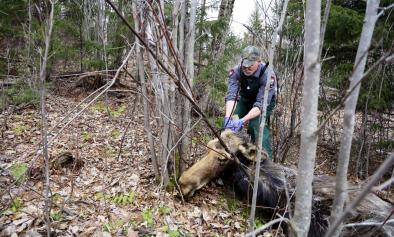Science Source
Uncertain recovery of the North Atlantic right whale in a changing ocean
- States that:
- Efforts to protect at-risk and endangered species typically focus on reducing anthropogenic sources of mortality
- However, failing to recognize the additional role of environmental factors can lead to erroneous demographic analyses and conclusions
- Builds capture-recapture models to quantify the role of prey availability on North Atlantic right whale demographic transitional probabilities
- Uses a corresponding demographic model to project population growth rates into the next century
- Projects future recovery of the right whale population as long as prey availability and mortality rates remain within the ranges observed during 1980–2012
- Warns that recent events indicate a northward range shift in right whale prey, potentially resulting in decreased prey availability and/or an expansion of right whale habitat into unprotected waters
- Concludes that an annual increase in the number of whale deaths comparable to that observed during the summer 2017 mass mortality event may cause a decline to extinction even under conditions of normal prey availability
Related Content
Science Source
| Global Change Biology
Decadal-scale phenology and seasonal climate drivers of migratory baleen whales in a rapidly warming marine ecosystem
Daniel E. Pendleton, Morgan W. Tingley, Laura C. Ganley et al
Headline

May 19, 2022 | Climate Nexus Hot News
Climate Change Great For Winter Ticks, Very Bad For Moose Calves
Science Source
Climate change increases cross-species viral transmission risk
Colin J. Carlson, Gregory F. Albery, Cory Merow et al
Science Source
| Journal of Animal Ecology
Climate change affects bird nesting phenology: Comparing contemporary field and historical museum nesting records
John M. Bates, Mason Fidino, Laurel Nowak-Boyd et al


